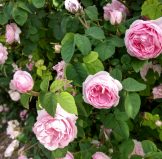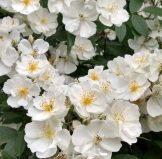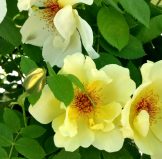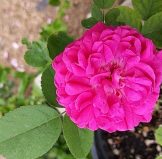 HARLEQUIN’S GARDENS 2024 TOMATO STARTS
HARLEQUIN’S GARDENS 2024 TOMATO STARTS
| “Anasazi” |
| Aunt Ruby’s German Green |
| Beam’s Yellow Pear |
| Better Boy hyb. |
| Big Rainbow |
| Black from Tula |
| Black Krim |
| Brown Sugar |
| Black Sea Man |
| Blush |
| Burrell’s Special |
| Bush Early Girl |
| Carbon |
| Carmello hyb. |
| Cascade Village Blue |
| Cherokee Purple |
| Chianti Rose |
| Chocolate Cherry |
| Cosmonaut Volkov |
| Early Girl Hyb. |
| Flaming Burst |
| Floradade |
| Garden Peach |
| Glacier |
| Gold Medal |
| Gold Nugget |
| Green Zebra |
| Isis Candy cherry |
| Japanese Blk Trifele/Black Truffle |
| Jaune Flamme |
Juliet hyb
| Large Red Cherry |
| Maglia Rosa |
| Martino’s Roma |
| Matt’s Wild Cherry |
| Mexico Midget |
| Moskvitch |
| Mountain Delight Hyb |
| Native Sun |
| Orange King |
| Paul Robeson |
| Peacevine cherry |
| Pink Berkeley Tie-Dye |
| Pink Brandywine, Sudduth Strain |
| Pink Bumblebee |
| Principe Borghese |
| Pruden’s Purple |
| Red Robin |
| San Marzano II |
| Sasha’s Altai |
| Striped German |
| Stupice |
| Sun Gold hyb |
| Sunrise Sauce |
| Super Sioux |
| SuperSweet 100 hyb |
| Sweetie |
| Tasmanian Chocolate |
| Taxi |
| Thessaloniki |
| Tidy Treats hyb |

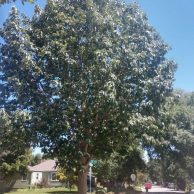
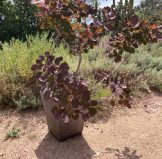
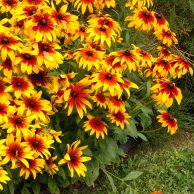 Fall is among the best times to plant perennials. While we may begin to wilt from late summer heat, many plants rise to the occasion and burst into bloom! As days begin to grow shorter, perennials spend the next few months developing root systems or taproots that delve well below the hot, dry surface soil. Pollinators depend on finding pollen and nectar sources through the entire summer, so it’s important to include late-summer and autumn bloomers in your garden.
Fall is among the best times to plant perennials. While we may begin to wilt from late summer heat, many plants rise to the occasion and burst into bloom! As days begin to grow shorter, perennials spend the next few months developing root systems or taproots that delve well below the hot, dry surface soil. Pollinators depend on finding pollen and nectar sources through the entire summer, so it’s important to include late-summer and autumn bloomers in your garden. 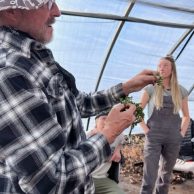
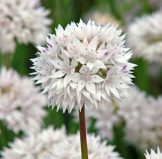 Circa 1857, this delicate-looking yet easy-growing North American native has composite 3″ globes of star-shaped, sparkling white flowers with pale lavender stamens tipped with purple anthers and sturdy stems.
Circa 1857, this delicate-looking yet easy-growing North American native has composite 3″ globes of star-shaped, sparkling white flowers with pale lavender stamens tipped with purple anthers and sturdy stems.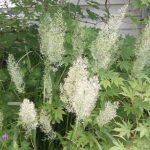
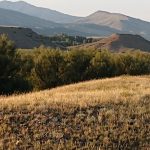
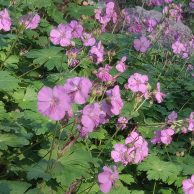 Hardy Geraniums are some of the most versatile an adaptable perennials for our area! Available in many colors and habits, they can be useful in sun and shade, moist and dry, as individual specimens, companion plants and ground covers.
Hardy Geraniums are some of the most versatile an adaptable perennials for our area! Available in many colors and habits, they can be useful in sun and shade, moist and dry, as individual specimens, companion plants and ground covers.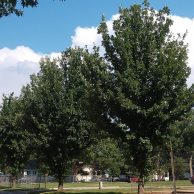 Bur Oak (Quercus macrocarpa) is a majestic, slow-growing tree reaching 60 to 70’ in height and spread, and is typically very long-lived (think 200, 300+ years!). It’s the sort of tree you plant for the benefit of the generations to come. Many oak species don’t thrive in Colorado’s alkaline soils, but Bur Oak is a happy exception. It is also drought-tolerant once established, even in dry clay, and can handle city conditions quite well. Bur Oak’s strong wood and strong, almost right-angled branch connections resist breakage in wind and snow.
Bur Oak (Quercus macrocarpa) is a majestic, slow-growing tree reaching 60 to 70’ in height and spread, and is typically very long-lived (think 200, 300+ years!). It’s the sort of tree you plant for the benefit of the generations to come. Many oak species don’t thrive in Colorado’s alkaline soils, but Bur Oak is a happy exception. It is also drought-tolerant once established, even in dry clay, and can handle city conditions quite well. Bur Oak’s strong wood and strong, almost right-angled branch connections resist breakage in wind and snow. 
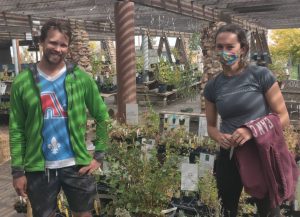 Our 2022 Fall Members-Only Sale has finished, and now our Big Fall Sale has begun, with 20% off for everyone! Plants included in this week’s sale are:
Our 2022 Fall Members-Only Sale has finished, and now our Big Fall Sale has begun, with 20% off for everyone! Plants included in this week’s sale are: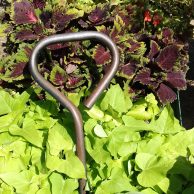 Our best selection of plants for the 2021 season is here now! Our selection of plants for shade and part shade has never been better, including Hosta (many kinds!), Ferns (5 kinds!), Bergenia, Hellebore, Foxglove, Geranium (many), Coral Bells (many), Monkshood, Persicaria, Pulmonaria, Golden Wood Poppy and Clematis (lots!), and some new selections, like Solomon’s Seal (2 kinds)!
Our best selection of plants for the 2021 season is here now! Our selection of plants for shade and part shade has never been better, including Hosta (many kinds!), Ferns (5 kinds!), Bergenia, Hellebore, Foxglove, Geranium (many), Coral Bells (many), Monkshood, Persicaria, Pulmonaria, Golden Wood Poppy and Clematis (lots!), and some new selections, like Solomon’s Seal (2 kinds)!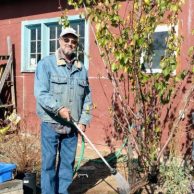

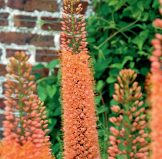
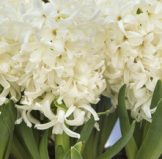 Bulb. Z4. 8-12” tall. Blooms mid-spring. Compost-improved soil.
Bulb. Z4. 8-12” tall. Blooms mid-spring. Compost-improved soil.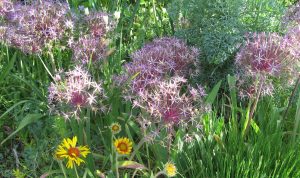


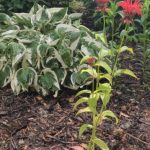
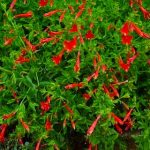
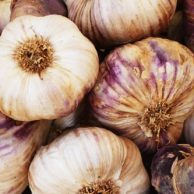 It’s time to buy your ‘seed’ garlic, which you should store in a cool, dry, well-ventilated place until planting time, from mid-October to mid-November. Seed garlic bulbs are specifically chosen for planting because they are the healthiest bulbs with the largest cloves, and they are intact. By planting the largest cloves, you’ll be rewarded with a harvest of big, juicy bulbs.
It’s time to buy your ‘seed’ garlic, which you should store in a cool, dry, well-ventilated place until planting time, from mid-October to mid-November. Seed garlic bulbs are specifically chosen for planting because they are the healthiest bulbs with the largest cloves, and they are intact. By planting the largest cloves, you’ll be rewarded with a harvest of big, juicy bulbs. Hummingbirds are zipping and humming and sipping around our gardens, partaking of the summer’s bounty of nectar-rich flowers, many of which are ‘color-coded’ specifically to attract them. And you’ll want hummers in your garden, not only because they’re beautiful, not only because some plants depend on them for pollination, not only because migratory birds are imperiled, but also because they eat prodigious numbers of small flying insects like mosquitoes! And did you know, some hummingbird have been known to live up to 25 years!
Hummingbirds are zipping and humming and sipping around our gardens, partaking of the summer’s bounty of nectar-rich flowers, many of which are ‘color-coded’ specifically to attract them. And you’ll want hummers in your garden, not only because they’re beautiful, not only because some plants depend on them for pollination, not only because migratory birds are imperiled, but also because they eat prodigious numbers of small flying insects like mosquitoes! And did you know, some hummingbird have been known to live up to 25 years!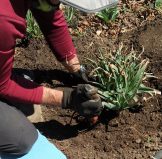 The best time of day to plant your new vegetable starts, or any other container-grown plants, is after sundown, when the temperature has decreased a bit and the sunlight is not direct. Avoid planting in windy conditions, which can desiccate the fragile plant. If you plant in the evening, plants will have all night and early morning to make some adjustment to their new homes.
The best time of day to plant your new vegetable starts, or any other container-grown plants, is after sundown, when the temperature has decreased a bit and the sunlight is not direct. Avoid planting in windy conditions, which can desiccate the fragile plant. If you plant in the evening, plants will have all night and early morning to make some adjustment to their new homes.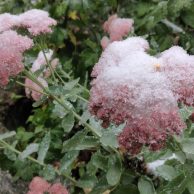 As Colorado gardeners, we’ve come to expect snow in October (last year it was October 10), but September?! In the past 24 hours, we saw a temperature swing of more than 60 degrees, going from record-breaking heat to one of the earliest recorded snow falls in the state (the earliest recorded area snowfall was in 1961 when Denver received over 4″ of snow on Labor Day).
As Colorado gardeners, we’ve come to expect snow in October (last year it was October 10), but September?! In the past 24 hours, we saw a temperature swing of more than 60 degrees, going from record-breaking heat to one of the earliest recorded snow falls in the state (the earliest recorded area snowfall was in 1961 when Denver received over 4″ of snow on Labor Day).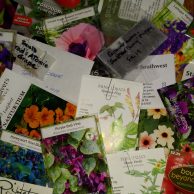
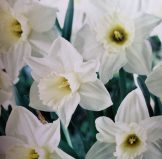 Breathtaking pure white flowers. Grows to 14” tall. Plant 6” deep and 6” apart in full sun to light shade. Deer and rabbit resistant.
Breathtaking pure white flowers. Grows to 14” tall. Plant 6” deep and 6” apart in full sun to light shade. Deer and rabbit resistant.